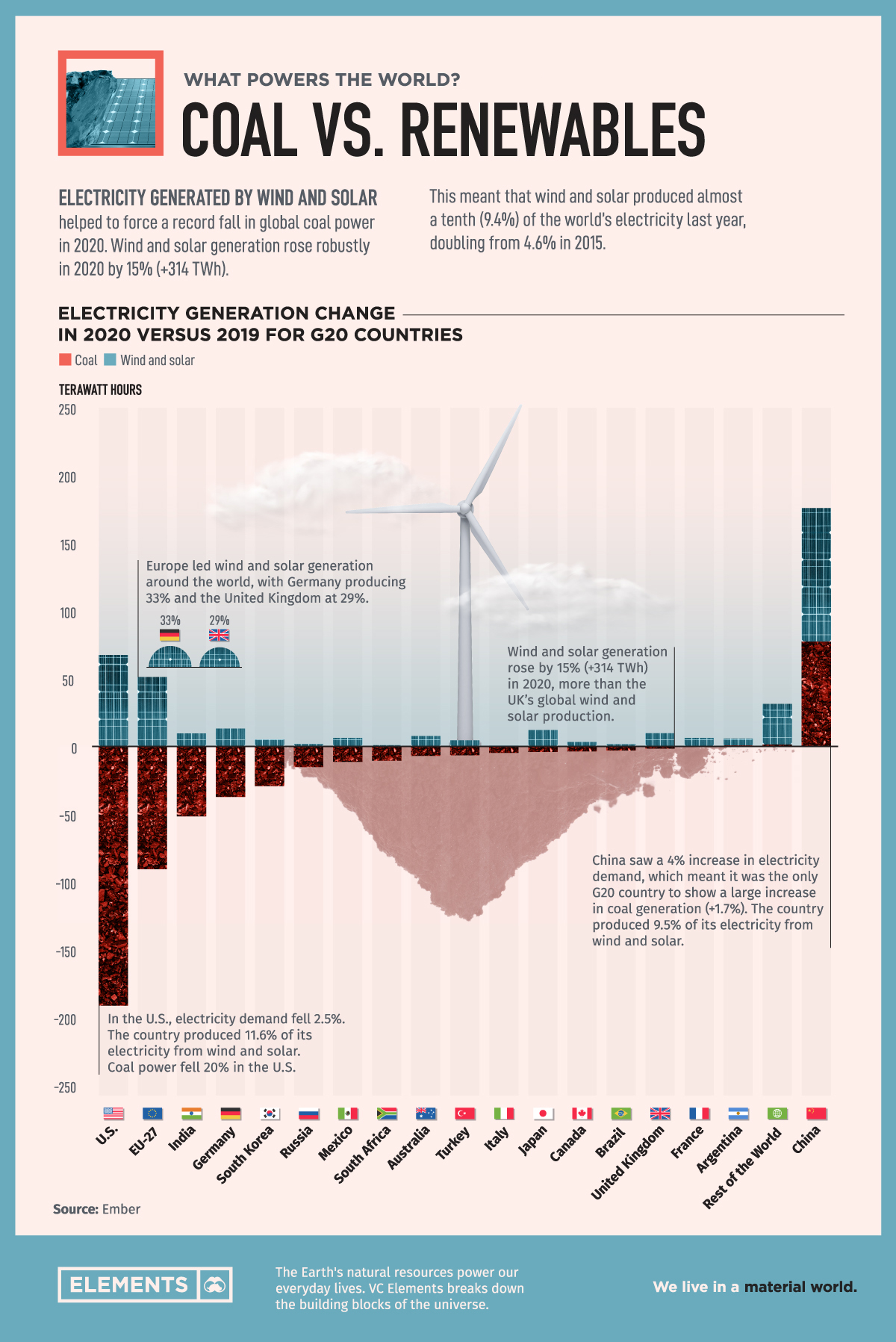
As the covid-19 pandemic has forced people to work and shop from home, cancel gatherings, and reduce the use of transportation, it has also paused the world’s rising demand for electricity.
The pandemic has opened a window of opportunity to reduce the share of power generated by fossil fuels. When demand for electricity drops, coal plants are usually switched off first since the process of burning fuels constantly runs up costs. In contrast, renewables such as wind and solar plants, once built, have significantly lower running costs.
This infographic based on Ember’s Global Electricity Review shows how wind and solar generation rose robustly in 2020 by 15% (+314 TWh), compared to 2019. That helped coal use to fall a record 4% (-346 TWh).
Wind and solar produced 9.4% of the world’s electricity last year, doubling from 4.6% in 2015.

As you can see in the table above, many G20 countries now get around a tenth of their electricity from wind and solar, including India (9%), China (9.5%), Japan (10%), Brazil (11%), the U.S. (12%), and Turkey (12%).
Europe led wind and solar generation around the world, with Germany producing 33% and the United Kingdom at 29%. Overall, electricity demand fell 3.5% in the European Union.
Coal generation collapsed almost everywhere in 2020 compared to 2019, with large falls in the U.S. (-20%), EU (-20%), and India (-5%).
China was the only G20 nation to show a large increase in coal generation (+1.7%). Overall, the country saw a 4% increase in electricity demand in 2020, as it was the first to restart production after the first months of the covid-19 crisis.
China is now responsible for 53% of the world’s coal-fired electricity, up from 44% in 2015.

The pandemic has put political leaders in a unique position: along with additional policies such as eliminating subsidies for fossil fuels and increasing investments in wind and solar power, it is now easier than ever before to accelerate the end of high-carbon electricity.
(This article first appeared in VC Elements)
Comments